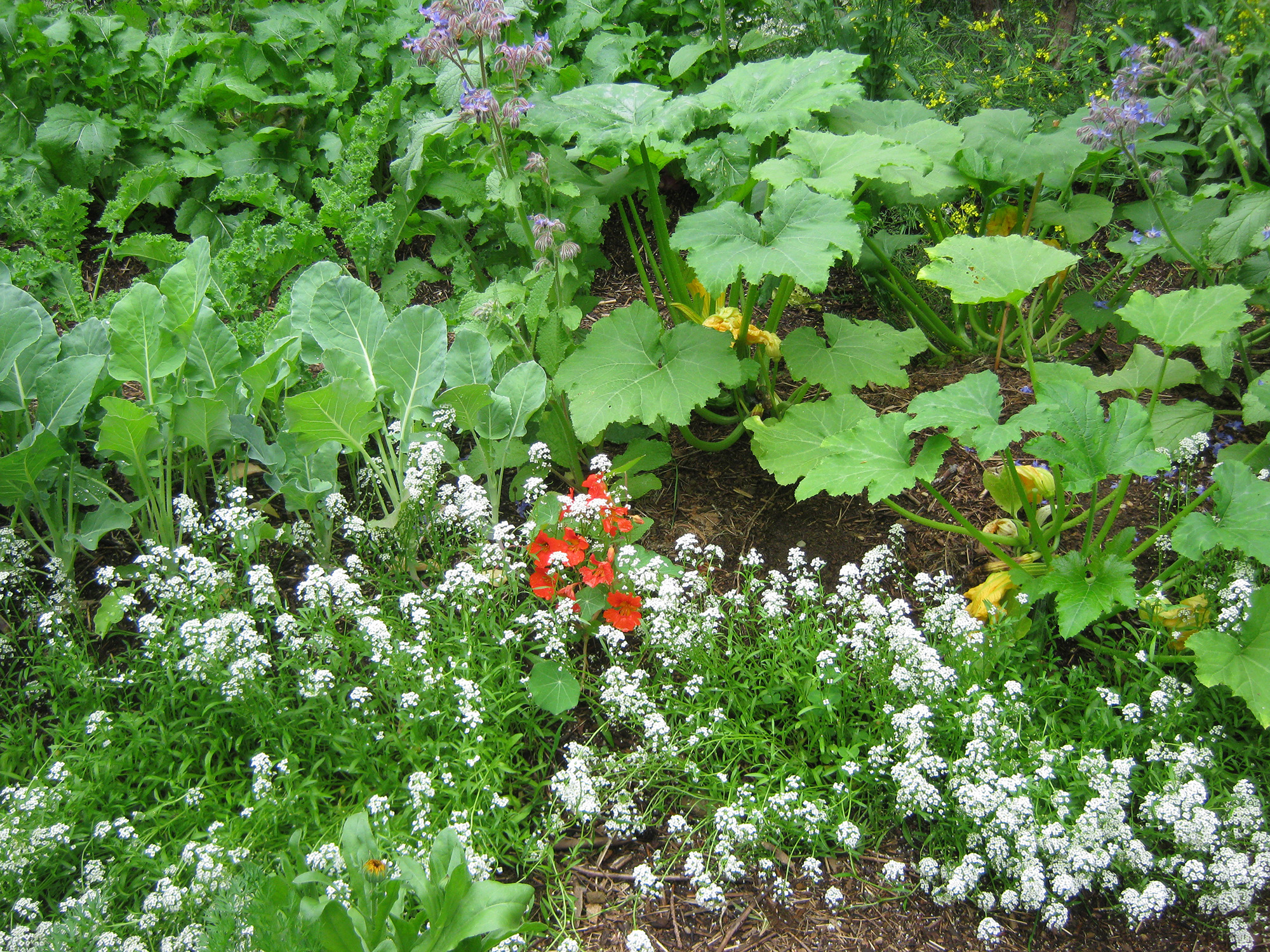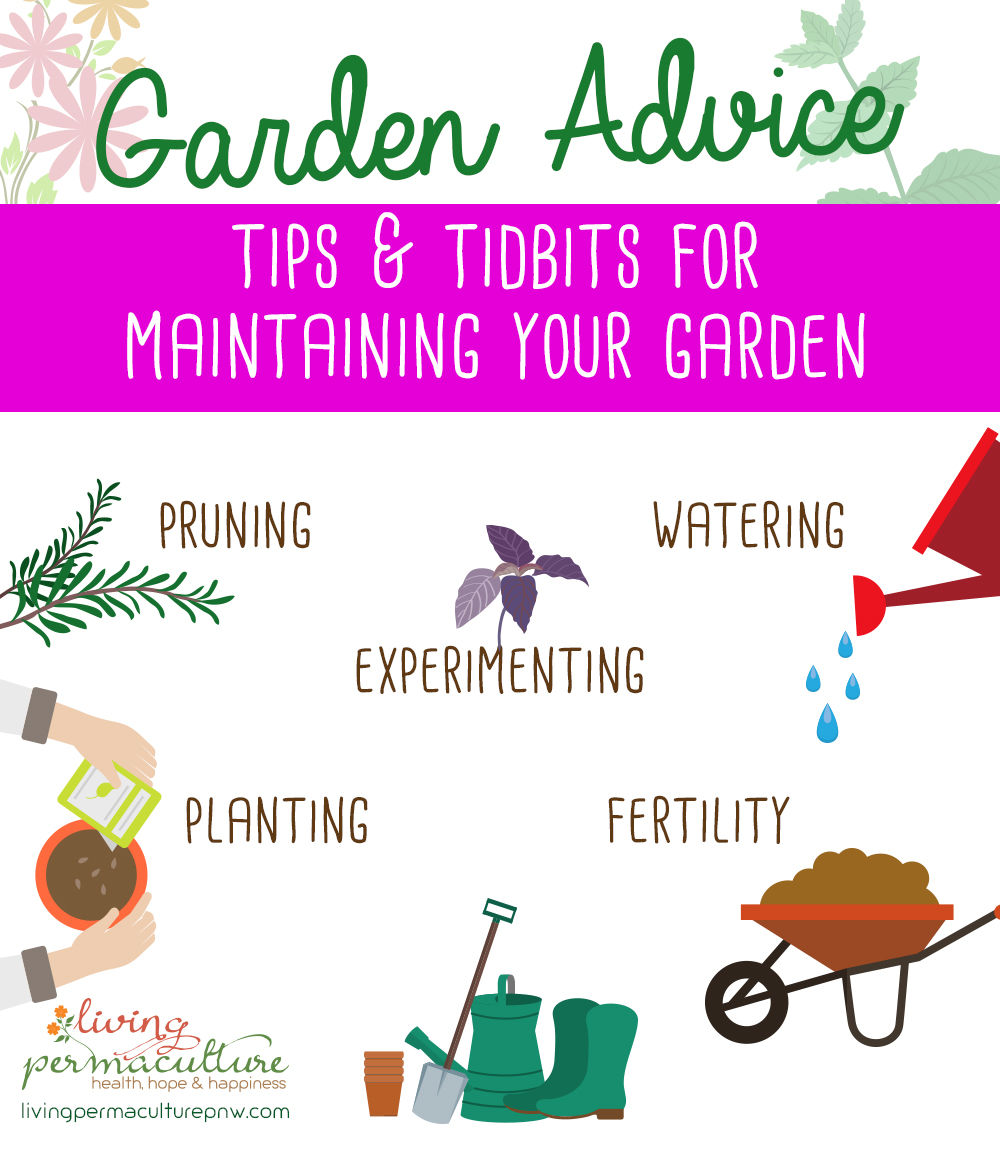Gardening is a pretty straightforward affair: you plant some seeds in some soil, and things grow. But there are always little tips and tricks that you can learn that will make it easier for you.
Vegetable garden advice can be found all over the internet, and in thousands of books; but how do you know if it’s good advice?
One way is to do some research, and see what your trusted garden sources have to say about it. The other way is to try it for yourself! Experimenting in the garden is not only fun, but it will teach you so much about your particular growing conditions, and what it is possible to grow in your garden.
These tips and tricks that I’ve written here are just a few little things I’ve learned along the way. I’m sure there are a gazillion more, and I’ll be sharing some in future posts. I hope these are helpful to you this gardening season.
Watering
Don’t just water the plants, water the whole garden, even the paths. If you just water where the plants are growing, the dry parts of the soil will suck up the water anyway, and deprive your plants.
Also, dry soil isn’t living soil. You want your soil to be alive with microorganisms, and moisture will help them thrive. If your soil dries out too much, it will be much harder to re-hydrate; and if you have clay soil, it will be even worse.
Another reason to keep the soil moist is to help your vegetables roots become healthy and strong. If the soil is only moist around the plants, the roots won’t reach very far, and the plants won’t be as strong as they could be.
You want your plant’s roots to reach deep and wide. This will do two things:
- The roots will anchor the plant so it won’t fall over when it gets tall.
- Strong, deep roots have access to more nutrients.
And finally, you want ALL of the soil in your garden to be alive, not just the soil where the plants are growing. Healthy soil with a thriving microorganism population will benefit the whole garden by providing fertility, organic matter, and mycorrhizal fungi (the internet of the soil). And healthy soil grows healthy vegetables.
Some plants don’t like overhead watering, so if you planned on using sprinklers, you might want to rethink that. Lots of plants are perfectly fine with it, but some could develop problems.
Tomatoes and cucumbers will not appreciate getting their leaves wet. And plants that are planted very close together, such as peas and beans, could develop diseases if they don’t have enough air flow.
Overhead watering isn’t the most efficient form of watering anyway, so it’s best to stick to just watering the soil. Hand watering for small gardens, or drip irrigation for larger gardens, is far more efficient.
Pruning and deadheading
Pinch out the growing tips of herbs to make them bushier. Thyme, oregano, basil, rosemary – well, most herbs actually – will benefit from having their growing tips pinched off.
When you snip off the growing tip, new stems will begin to form at the leaf axis points. This will not only make it bushier, but it will also keep it from getting too leggy.
Pinch off the flowering tips of some plants so they keep producing. Sometimes you can extend the production of a plant by pinching off the flowering tips before they flower. I have done this with brassicas such as mustards and other brassicas. And the growing tips are tasty too.
Deadheading extends flower life. As you know, many flowers will continue to produce new blooms if you keep picking the flowers. I keep calendula blooming all season by picking and drying the blooms for making infused oil. And marigolds will keep pumping them out if you keep picking them.
When pruning and deadheading, be sure to use sharp scissors or pruners. You don’t want to tear the plants; you want to make a clean snip. Small plants with soft tips can be snipped with just the fingernails; but if the plant is larger – or you don’t have long enough fingernails – using scissors or pruners is best.
Fertility
Use good compost. Good compost is one that has a lot of diversity, therefore a lot of nutrients. Make sure to put lots of stuff in your compost: kitchen scraps, garden scraps, seaweed, garden soil, ashes, urine, etc. Keep your garden topped up with compost. It will act as a mulch, as well as adding fertility and organic matter to your garden.
Only use natural amendments: blood meal, bone meal, lime, rock dust, seaweed, feathers, compost, etc. Don’t go for chemical fertilizers. They kill the soil.
Fertile soil creates healthy plants; and healthy plants can withstand adversity much better than sickly plants. So keep your fertility up.
Teas can be great. Manure tea, compost tea, and seaweed tea make great soil amendments. And you can make them yourself. Here is a good video to get you started, from my hero, Geoff Lawton.
Planting
Keeping carrot seeds moist is the trickiest part of growing carrots. But there is an old permaculture trick that will help. After you sow the seeds and water them well, lay a board of some kind of the row of seeds.
This will keep the moisture in. Start checking the seeds after about a week. Check each day to see if any have germinated. Once they start, you can take the board off.
Sowing tiny seeds can be tricky. If you don’t have the patience to separate them and plant one seed per cell (for transplanting), you can just sprinkle them over the surface of the soil. Once they sprout, you can then prick out each tiny seedling and put it into it’s own cell.
The pricking out method is also a good method for starting seeds when you’re not sure of the viability of the seeds. They might be old, or come from a questionable source. By sprinkling them over the soil, and pricking them out, you will save a lot of space by not planting seeds into their own cell that don’t germinate.
Multi-sowing is another great way to save space, both in the greenhouse and in the garden. There are plenty of plants that can be grow in groups of 4 or more. Some of these include:
- green onions – 10 to 12 seeds
- leeks – 4 to 5 seeds
- radishes – 4 to 5 seeds
- beets – 4 to 5 seeds
- turnips – 4 seeds
- broccoli – 2 seeds
Experiment with other vegetables and see what happens. I found that with broccoli, when I planted two plants together the main heads were a little smaller, but they put out just as many side shoots as usual.
Plant salad greens fairly thickly, and then thin out the tasty baby greens, to make room for the rest of the seeds to make larger plants. Then you can pick individual leaves from the plants until they go to seed.
Keep experimenting
I hope you’ve enjoyed perusing these simple bits of vegetable garden advice. Experimenting in the garden is a real kick, and you just never know what you’ll learn. Getting to know your garden will make you a better gardener; and doing small experiments is the best way to do that.
Our job as gardeners is to be stewards of the land. When we create a garden, we become responsible for taking care of that bit of soil, as well as the soil and water around it. So please be responsible and use organic and natural amendments.
Everything that goes into your soil either runs off with the water, or is soaked up into your vegetables. So think about what you use. Healthy soil = healthy vegetables = healthy you.
Please share your thoughts and questions in the comments below. I look forward to hearing from you.
Health, Hope & Happiness
Tracy
This article may contain affiliate links. If you click on a link and make a purchase, I will receive a small commission, at no extra cost to you. See the full Affiliate Disclosure here.





